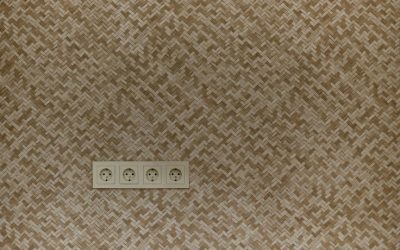Flooding can wreak havoc on homes, causing significant damage to floors, walls, and especially carpets. When disaster strikes, it’s crucial to act swiftly and effectively to mitigate the damage. In this comprehensive guide, we delve into the best practices for flooded carpet cleaning, offering detailed steps and expert tips to help you restore your home.
Understanding the Impact of Flooding on Carpets
Flooding introduces a plethora of contaminants into your home, including dirt, debris, bacteria, and possibly sewage. Carpets, with their absorbent nature, are particularly vulnerable, quickly soaking up water and contaminants. This can lead to unpleasant odors, mold growth, and permanent damage if not addressed promptly.
Why Immediate Action is Crucial
Delaying the cleanup process allows water to seep deeper into the carpet fibers and padding, increasing the risk of mold and mildew. Mold can start growing within 24-48 hours, posing health risks and further complicating the cleanup process. Swift action is essential to prevent these issues and preserve the integrity of your carpets.
Initial Steps for Flooded Carpet Cleaning
1. Ensure Safety First
Before starting the cleanup, ensure that the affected area is safe. Turn off electricity to the flooded area to avoid electrical hazards. Wear protective gear such as gloves, boots, and masks to safeguard against contaminants.
2. Remove Standing Water
Use a wet/dry vacuum to extract as much standing water as possible. This step is crucial in reducing the amount of water absorbed by the carpet and preventing further damage. For severe flooding, you may need to rent a commercial-grade water extractor or hire a professional water damage restoration company.
3. Remove Furniture and Belongings
Clear the affected area of all furniture and personal items. This not only makes the cleaning process easier but also prevents further damage to your belongings. Items that have come into contact with floodwater should be cleaned and dried thoroughly or discarded if they are beyond repair.
Detailed Carpet Cleaning Process
4. Assess the Damage
Once the initial water has been removed, assess the extent of the damage. Determine if the carpet and padding are salvageable. In cases of severe contamination, especially with sewage, it may be best to replace the carpet and padding entirely.
5. Clean and Disinfect
a. Carpet Shampooing
Use a high-quality carpet shampoo designed for deep cleaning. Apply the shampoo according to the manufacturer’s instructions and use a carpet cleaner to thoroughly clean the carpet fibers. This step helps remove dirt, bacteria, and residual contaminants.
b. Disinfecting
After shampooing, apply a disinfectant specifically designed for carpets. This is crucial to eliminate bacteria and mold spores. Follow the product instructions carefully to ensure effective disinfection.
6. Drying the Carpet
carpet drying is a critical step in the cleaning process. Use high-powered fans, dehumidifiers, and open windows to enhance airflow and speed up the drying process. It is essential to dry the carpet completely to prevent mold growth. Depending on the severity of the flooding, this process can take several days.
7. Addressing the Padding
In many cases, carpet padding may need to be replaced as it can retain moisture and contaminants even after thorough cleaning. If the padding is salvageable, ensure it is dried completely and disinfected before reinstalling the carpet.
Post-Cleaning Steps
8. Deodorizing
Flooded carpets can retain unpleasant odors even after cleaning. Use a commercial-grade carpet deodorizer to neutralize any lingering smells. Baking soda can also be an effective and natural alternative.
9. Final Inspection
Conduct a thorough inspection of the cleaned area. Check for any signs of mold or mildew and ensure the carpet is completely dry. If any issues are detected, address them immediately to prevent further problems.
Preventive Measures for the Future
10. Regular Maintenance
Regular carpet cleaning and maintenance can help prolong the life of your carpets and ensure they remain free from contaminants. Schedule professional cleanings at least once a year and address any spills or stains promptly.
11. Installing Waterproof Barriers
Consider installing waterproof barriers or using waterproof carpet padding in areas prone to flooding. This can help reduce the risk of water damage in the future.
12. Proper Drainage Systems
Ensure your home has proper drainage systems in place, such as sump pumps and gutter systems, to redirect water away from the foundation. Regularly inspect and maintain these systems to prevent flooding.
When to Call Professionals
While DIY methods can be effective for minor flooding, severe cases often require professional intervention. Water damage restoration companies have specialized equipment and expertise to handle extensive flooding and ensure thorough cleaning and drying.
Signs You Need Professional Help
- Extensive water damage covering large areas
- Presence of sewage or hazardous contaminants
- Persistent mold growth despite cleaning efforts
- Structural damage to floors or walls
Conclusion
Cleaning a flooded carpet requires prompt and thorough action to mitigate damage and prevent health risks. By following the detailed steps outlined in this guide, you can effectively clean and restore your carpets, ensuring a safe and healthy living environment.




0 Comments